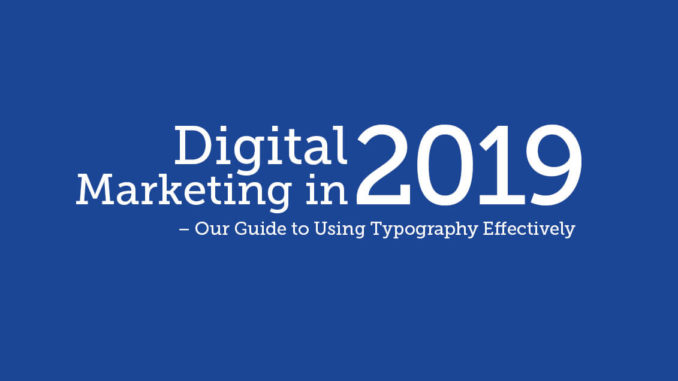
Whether in video or image form, the process of
translating ideas into something much more visually appealing has been
continuously evolving far beyond what anyone would have imagined during the
first inception of visual art. The process of taking concepts and ideas from
paper and putting it on screen has come a long way, raising the expectations
that people have for the tools and capabilities of designers and developers
across all industries and mediums.
With the boom in the innovation of the creative
tools industry, creative workers have garnered more access to programs and
techniques that have allowed them to push the limit on what they can put out;
however, with all the new mediums and specializations in the creative world,
one artform still remains as important and effective as ever: typography.
Typography or typographic concepts are creative marvels that have been around for the longest time. They are tried-and-tested mediums that have helped with communicating ideas and creating impact much more effectively as compared to other creative manifestations.
Creative intro from the Movie ‘catch me if you can” an excellent example of typography in motion telling a story.
Understanding typography
As an enhanced form of written communication,
typography uses a relationship between appearance, materials, and position to
help captivate audiences with pure creative engagement. It allows them to take
in all the concepts that must be communicated to them. Whether you’re a
thriving creative, industry professionals, business owner, entrepreneur, or key
opinion leader, it’s important that you have a firm grasp of typography if you
want to stay ahead of the competition and grow your following.
The history of typography
Here’s a fact about typography: as our means of
communication and language grow and evolve to cater to unify more people in
terms of communication, typography evolves at the same time while in the
pursuit of breaking down communication barriers. However, as the digital age
continues to present opportunities and challenges, having the right typography
concepts and approaches can mean the difference between having your message
full understood or completely disregarded.
While printed text is often regarded to be
stiffer in terms of capabilities due to being patterned after certain
demographics, digital typography has posed a challenge for designing for
screens in terms of how the reader, environment, and medium can affect the
final product that is conveyed to the reader.
In order to use typography effectively in the
digital age through technologically-enhanced mediums, it’s important to use the
powerful medium with the interrelationships of the reader, medium, and
environment in mind when trying to create a typographic design that really
works.
Although your readers might not exactly notice
the intricate changes that you made to the typography, they’ll appreciate the
effort that you made because of how it resulted in them being able to interpret
and take in your message much more easily compared to just reading plain text.

Typographic challenges in the digital age
While typography can help tremendously with
communication in the modern age, there are some challenges in the digital age
that threaten its effectivity as well. One such example of a challenge posed by
the technologically-driven time period is the set of confines that restrict
creative freedom in terms of designing online, such as typographic hierarchies
that only allow a certain set of typefaces to be used in order to keep
readability, typographic voice, legibility, and aesthetics at an optimized
level without one aspect overpowering the rest.
While having comprehensive typographic
hierarchies might seem like a good thing, it actually can affect user
experience (UX) negatively in terms of having the message carried out
effectively. This can be counter-productive in the mission to better
communication and overall user experience.
Variable fonts and axes
While typography faces a steep hill that may pose
a significant challenge in the pursuit of effective communication, there are
two pieces of technology that could help with overcoming the hurdles set by the
digital age: variable fonts and axes. Variable fonts (which are also known as
OpenType font variations) are tasked with packaging and delivering every style
in a typeface family far more effectively on digital platforms as compared to
static fonts, resulting in better web performance and improved typographic
flexibility.
Axes, on the other hand, are a typeface family
connected through common design characteristics and allowing for seamless font
pairing, overall aesthetic appeal, and heightened performance. In this case,
axes are, by technical definition, the weight and width in a font family. They
offer a greater sense of flexibility in how typography is used and created.
If you’re looking for a digital marketing agency to help you redesign your online brand and presence then get in touch with us today! We’re a web design & marketing agency based in Bangkok.
The post Digital Marketing in 2019 – Our Guide to Using Typography Effectively appeared first on Mediacake.
